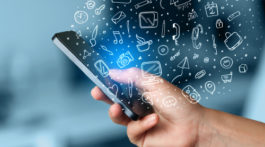Three Recommended Technologies Retailers Should Invest In
Retail business owners are plagued with deciding what technology will work best for their business. The retail industry utilizes a wide range of technological innovations. Maximization and efficiency are the goals in acquiring technology. How does a business owner know what’s best for them?
Research is a retailer’s best tool to be able to make an informed decision on what technology is best to invest in. A little homework pays off! To make things a bit easier, we mention three technological platforms that are trending in the retail industry.
What does technology do for the retail industry?
Retailers are deploying technology in their businesses to help things run efficiently and increase productivity. Solutions should always target the needs of your business. In today’s retail world, innovations are being tapped into to significantly boost the overall operation of a business.
Whether you want to focus on employee productivity or incorporate a point of sales platform, technology will quickly become your best friend!
Benefits Of Technology
- Increases productivity with employees and operations
- Increases revenue
- Keeps up with the demands of consumers
- Improves customer experience
- Builds customer base
- Eases and improves marketability effort
Technological Trends In Retail
- Cashierless integration
- Artificial Intelligence (robots) for delivery and floor staffing
- Enhancement of funneling automation for social media
- Real-time inventory integration
- Virtual reality/augmentation
Our Top-Three Retail Technology Recommendations
Technology evolves continually. The vastness of what’s out there can be confusing. We have sifted through various platforms and innovations to highlight three top integrations.
Customer Experience Integration
Customers are the meat and potatoes of retail, and without them, there would be no retail industry. It’s vital that business owners invest in creating an experience for the customer that excels. By doing this, the customer will be back again and again. We live in an instant gratification culture, and consumers don’t want to wait when making a purchase.
BOPUS (Buy Online Pick Up in Store)
“Curbside” and “Drive-Up” are two of the best integrations that are currently being used by the retail industry. Customers can place an order online or on mobile, drive up to the store and have their purchase ready to go.
Target has a specific team of software engineers that develop and maintain “Drive-Up.” Here is how “Drive-Up” works for a customer.
- Shopping is done on the Target app.
- At checkout, the customer selects “Drive-Up.”
- The customer waits for a notification letting them know that their order is ready.
- They drive up to the designated “Drive-Up” parking spot and waits. The average wait time is about two minutes.
- A Target employee brings the order out the customer’s car and loads it.
Augmented Reality
Customers can try a product online through an augmented reality (AR) integration. This technology puts the product at their fingertips on a mobile device. A customer may want to try a certain shade of lipstick on or virtually paint a room. This allows the them to “try it before buying it.” Not only does this enhance the customer experience, but it also decreases the amount of product returns.
How Is AR Used In Retail?
- Furniture retailers use AR for customers to visualize how the product will look in their home through an app.
- Beauty product retailers give consumers a way to virtually try different products by using an image of their face. This is done through an app
- Clothing retailers like GAP have “virtual fitting rooms” to give consumers a way to try on the apparel to see how it might look on them. This is done by selecting a body image/shape on an app.
MCommerce
MCommerce (mobile commerce) is a subset of ecommerce. Mobile shopping is quickly becoming the way consumers make purchases online. 86% of Americans spend the majority of their mobile time in apps. One billion people shop daily through their mobile device.
Mcommerce has seen an exponential growth attributed to the apps and mobile point of sales. Retailers are streamlining customer experience with apps and POS.
App developers can tailor a mobile app that will boost your mcommerce taking it to an all new level. Mcommerce is stepping to the forefront of retail. If a business is to survive and grow, it must meet the demands of the consumer.
Omni Channeling
Businesses use a multi-channel infrastructure/platform that is designed to market, sell, and serve the customer. When a customer reaches out whether it’s through a website or mobile, you provide them the pathway to interact with your business. You are creating a customer experience while maximizing your goals and objectives that are aligned with each channel.
There are no generically used omnichannels. Each business tailors and customizes their omnichannels based on their specific needs.
An Example Of Successful Omnichannels
We all love Disney, right? They have honed in on perfecting omnichannel integration into their success. As soon as someone visits the website, the customer experience begins. People are drawn into the vivid beauty of the images as well as the features and ease of use. Disney has optimized their website to be mobile-friendly. One can plan their entire visit on a mobile device. This is where mcommerce comes in and how a business should tap into that integration.
Disney takes the experience further by providing visitors a mobile app to use within the park to find attractions and to see how long the wait time is to get into the attraction. For visitors staying at a Disney hotel, the app functions as your hotel room key. Additionally, the app will order room service and store the photos you have taken during your trip!
Investing In Your Business’ Future
It’s interesting how technology integrations focus on customer experience. In retail, the customer is the foundation the business is built around. To be successful, retailers must be progressive with the digital age and stay current on culture of digital consumerism.





